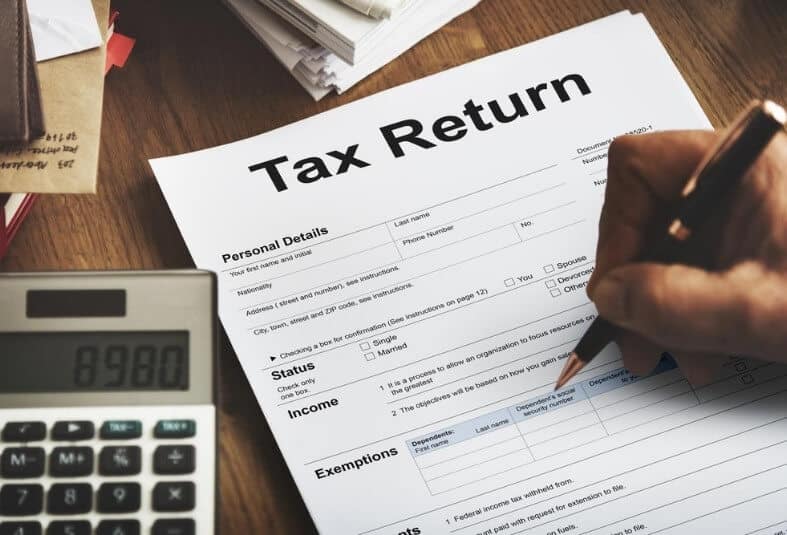Maximizing Tax Deductions in Australia: Tips and Tricks for the Upcoming Tax Year
The Usages of a Tax Return: Unlocking Possible Savings and Ensuring a Larger Tax Obligation Reimbursement
The tax return acts as an essential tool for people looking for to optimize their economic end results, using numerous methods for potential cost savings and enhanced refunds. By leveraging credit ratings and deductions, taxpayers can strategically lower their taxable income and improve their overall monetary standing. Nonetheless, the complexities of tax policies and the ever-evolving landscape of tax law require a detailed understanding of available options. What are the key methods that can be used to ensure that taxpayers take advantage of on these advantages? The solution might reveal greater than just monetary gains.
Recognizing Tax Deductions
Numerous taxpayers may locate themselves overwhelmed by the complexities of tax obligation reductions, yet recognizing these important components is crucial for taking full advantage of possible cost savings. Tax obligation reductions reduce taxable income, thereby decreasing the overall tax obligation obligation for businesses and people. Acquainting oneself with the different types of reductions available can considerably enhance one's ability to optimize income tax return.
Reductions can be classified right into conventional and itemized reductions. The basic deduction gives a fixed decrease in taxed earnings, while itemized deductions enable taxpayers to specify certain expenses, such as home loan rate of interest, state tax obligations, and philanthropic payments. Taxpayers need to analyze which alternative generates the best benefit, as picking the appropriate deduction approach can lead to considerable cost savings.
Furthermore, it is vital to maintain precise documents of deductible expenses throughout the tax year. This technique not only helps with the preparation of income tax return but likewise ensures conformity with IRS demands. Taxpayers should also stay informed about adjustments in tax obligation regulations that may impact eligible deductions, as these can vary each year. By properly going across the landscape of tax obligation reductions, individuals can disclose the possibility for an extra desirable tax obligation outcome and safe better financial benefits.
Checking Out Tax Obligation Credits
Tax obligation credit scores stand for an additional noteworthy avenue for taxpayers to reduce their general tax obligation liability, enhancing the benefits acquired from reductions. Unlike deductions, which reduced taxable earnings, tax obligation credit reports supply a dollar-for-dollar reduction of the real tax owed. This distinction makes tax obligation credit reports specifically useful for individuals looking for to optimize their savings.
There are 2 primary kinds of tax credit ratings: nonrefundable and refundable. Nonrefundable credits can decrease your tax obligation liability to absolutely no but not listed below that amount, while refundable debts can lead to a reimbursement if the credit ratings exceed the tax owed. Examples of commonly asserted tax obligation credit ratings consist of the Earned Revenue Tax Credit Scores (EITC), the Youngster Tax Credit report, and education-related credit scores like the American Opportunity Credit Score.
Eligibility requirements for these debts can vary significantly, commonly based upon income, filing status, and certain scenarios. Taxpayers must extensively examine the criteria related to each credit report to identify they assert all benefits for which they certify. By strategically utilizing available tax credits, individuals can improve their tax obligation returns, ultimately resulting in considerable savings and possibly bigger reimbursements.

Investing Your Refund Wisely
Obtaining a Tax refund can really feel like an economic windfall, however how that money is made use of can greatly impact long-term economic wellness. Instead of viewing your reimbursement as non reusable earnings, consider it a chance to buy your future.

One effective alternative is contributing to a Specific Retirement Account (INDIVIDUAL RETIREMENT ACCOUNT) This can improve your retired life cost savings while possibly yielding tax advantages. Investing in a varied supply portfolio can offer substantial growth capacity over time, permitting your reimbursement to work for you in the market.
Furthermore, take into consideration utilizing your refund to pay down high-interest financial obligation, such as bank card equilibriums. Reducing debt can enhance your monetary standing and soothe tension, eventually permitting you to allot more funds toward investments in the future.
For those concentrated on education, utilizing your refund for her response a 529 college cost savings plan can assist protect a brighter future on your own or your kids.
Preparation for Future Expenses
Carefully preparing for future expenditures is necessary for keeping economic security and accomplishing long-lasting goals. A well-structured monetary plan permits people to allot sources effectively, making certain that upcoming costs do not disrupt their economic well-being. Income tax return can offer a beneficial structure for this preparation procedure.
Utilizing the refund as a springboard, individuals can recognize and focus on considerable future costs, such as home repair work, education prices, or medical care needs. Establishing a budget that includes these prepared for costs allows a proactive approach, decreasing the probability of economic stress when the time involves resolve them.
Furthermore, setting apart funds from your tax refund right into specialized savings accounts can boost the performance of your planning. Australian Tax return online. Consider creating an emergency situation fund particularly for unforeseen expenditures, making sure that you are prepared for unpredicted situations without hindering your economic goals
Usual Mistakes to Prevent
When managing their tax returns that can weaken their economic planning initiatives,Several individuals make essential mistakes. One usual error is falling short to keep precise documents. Inadequate paperwork can bring about missed reductions, resulting in a lower refund or greater tax obligation responsibility. It is important to keep organized documents of all revenue, costs, and tax-related papers throughout the year.
Another regular mistake is ignoring to examine tax legislation modifications. Tax policies can progress each year, and ignorance of these modifications might lead to missed opportunities for tax obligation credit histories or reductions. In addition, several taxpayers ignore eligible deductions, such as those for academic costs or medical costs.

Declaring taxes too late or too very early can likewise be detrimental. Early filers might miss out on out on last-minute tax obligation breaks, while late filers take the chance of penalties and interest.
Additionally, not looking for expert assistance when essential can cause costly mistakes. Tax professionals can give useful insights, making sure compliance and optimizing prospective financial savings.
Finally, rushing with the return can bring about basic arithmetic errors or forgot forms. Putting in the time to verify all entries is crucial for a successful tax obligation return outcome.
Verdict
To sum up, the calculated use of tax returns serves as an important system for maximizing financial benefits. Awareness of common pitfalls can likewise enhance the tax obligation procedure, inevitably encouraging taxpayers to look at here now utilize their returns for an extra safe and secure economic future.
Tax obligation credit ratings represent one more notable opportunity for taxpayers to reduce their total tax obligation obligation, matching the benefits gained from reductions. Unlike reductions, which reduced taxable earnings, tax obligation credits provide a dollar-for-dollar decrease site link of the actual tax obligation owed. Nonrefundable credits can lower your tax obligation liability to absolutely no however not below that quantity, while refundable credit scores can result in a refund if the credit scores go beyond the tax owed. Instances of frequently claimed tax credit reports include the Earned Revenue Tax Credit Rating (EITC), the Youngster Tax Debt, and education-related debts like the American Chance Credit Rating.
Tax obligation policies can advance each year, and ignorance of these changes may result in missed out on possibilities for tax credits or deductions. - Australian Tax return online